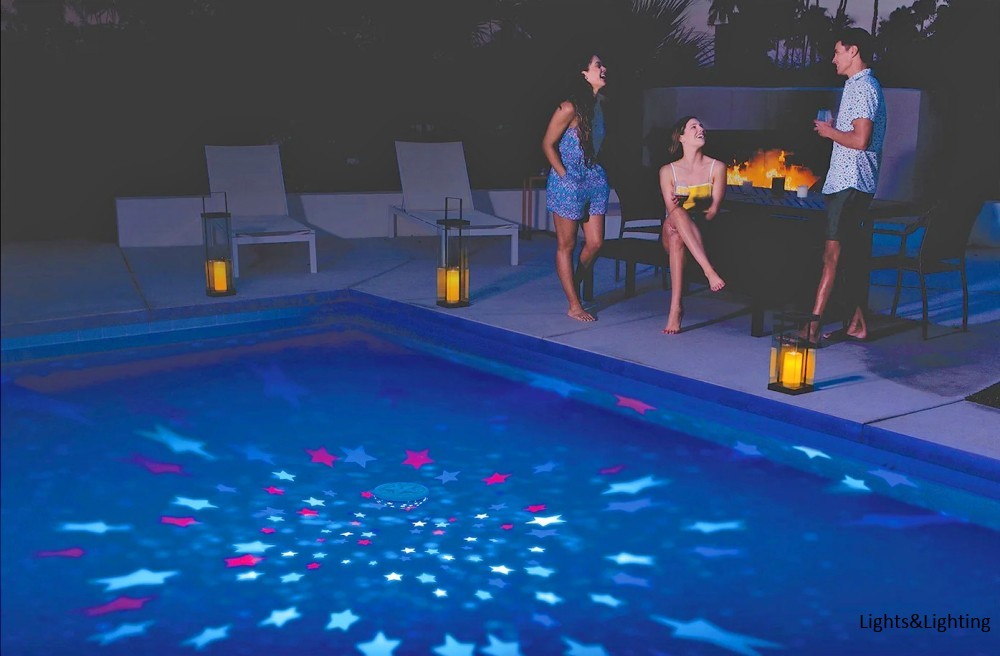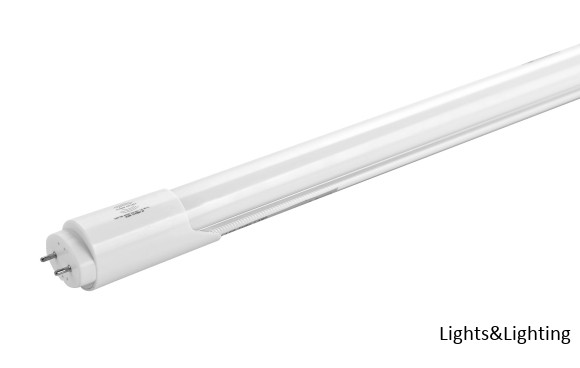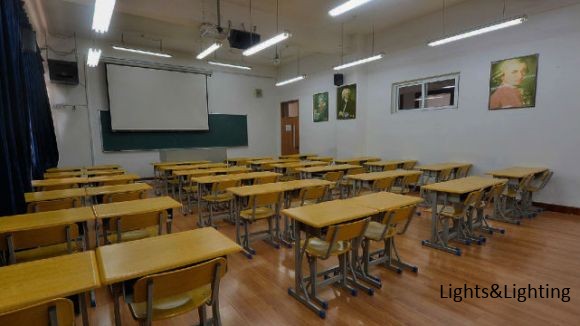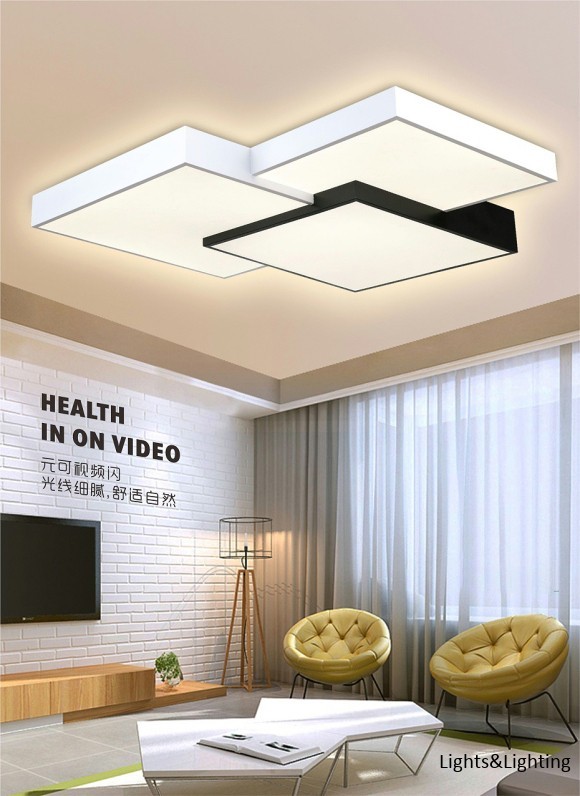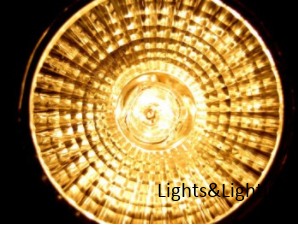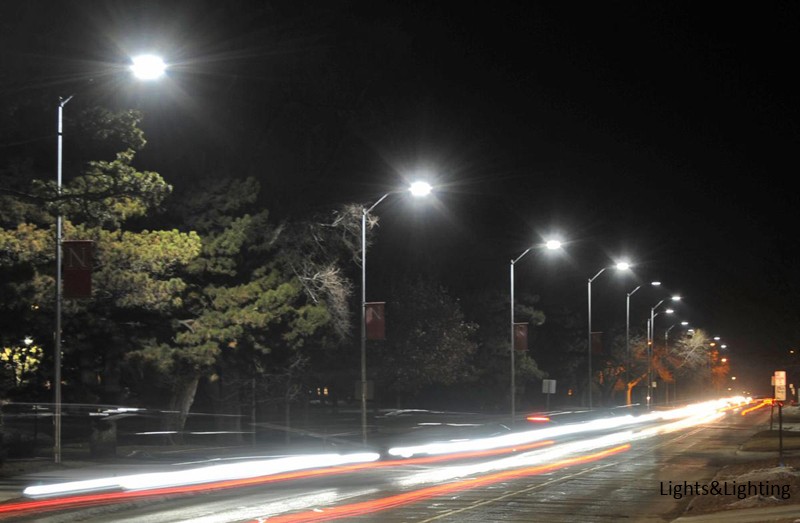Modern research shows that light can not only affect people's vision through different illuminance, color temperature and color rendering, but also affect people's physical and psychological state by improving attention and conveying emotional feelings. Therefore, the lighting design of the hospital should balance the different needs of patients in the three dimensions of vision, psychology and physiology, and create a healthy and comfortable diagnosis and treatment space through reasonable lighting design to promote the physical and mental recovery of patients.
Correspondingly, Xiao Hongqing, a professor at Taiwan Province University of Science and Technology, even pointed out directly that people who eat whole grains will go to hospital if they are not sick. If the hospital can improve the lighting environment to people-oriented humanized demand, and build the hospital lighting environment into a warm home, the patients will recover more quickly. He felt that from the most prestigious medical centers, teaching hospitals, specialized cancer hospitals to small clinics in the community, the lighting quality of hospitals did not meet the level of health, comfort and progress, and hospitals paid no attention to the psychological treatment effect brought by high-quality lighting quality. Looking at the development of hospital lighting in China, there is still a long way to go.
The first stage (1940s)
Can illuminate, see and see clearly.
The second stage (1990s)
Provide functional lighting for different operation requirements of hospitals, such as shadowless lamps for operating rooms; When building a hospital, daylighting, facing the sun and making full use of natural light are considered.
The third stage (since the 21st century)
The use of adjustable LED color light technology, for different patients and health care workers needs; to create light color and light intensity can be combined, adjustable human lighting system.
Medical staff pursue concentration and efficiency, a good and comfortable light environment will make them more focused; patients need emotional stability, a healthy light environment will enhance the patient's sense of well-being; managers want to ensure a safe care environment, reduce operating costs, and need safe and energy-efficient lighting equipment. Cai Jianqi, director of the Visual Health and Protection Laboratory of the Chinese Academy of Standardization, gave his views on the current problems of hospital lighting. He believes that the current hospital lighting in China is just beginning, but also rely on strengthening basic research, such as life sciences, pharmacology and other basic scientific research, a long way to go.
The most fundamental problem at present is that the management department does not understand the importance of lighting. Hospitals invest in medical equipment, attract outstanding medical staff spare no effort, air conditioning equipment is currently an important infrastructure of hospitals, but for lighting, especially healthy lighting light environment is completely unfamiliar, he has discussed and studied with ophthalmologists in mainland China and Taiwan, and also with ophthalmologists in class to introduce the importance of lighting engineering and future health lighting trends, he found that ophthalmologists for eye health research is very professional He found that ophthalmologists for eye health research is very professional, but for lighting but lack of knowledge, so there is a gap in quality vision care health education, reflected in the hospital is the hospital lighting environment is full of insufficient illumination, low light source can not create a good interaction between doctors and patients, but rather cause glare and strobe, ward lighting can not provide a good rest and rehabilitation environment, so that the original uncomfortable sick body more boredom and anxiety. Quality lighting environment is beneficial to treatment and rehabilitation, but the current domestic discussion of this part is extremely lacking, and the lighting industry is overly focused on energy saving, while ignoring the lighting health and visual health, more seriously, the hospital set standards and hospital evaluation system did not establish clear guidelines, the quality of lighting and the psychological feelings of patients into the evaluation, be misled to energy saving priority, all to EUI ( per square meter of electricity consumption per year) In addition to the different and bizarre lighting configurations and uneven lighting quality, the quality of lighting is still stuck at 30 years ago. "This is a very bad thing, if the hospital itself and the medical system do not pay attention to lighting, of course, it will cause patients to stay in the ward for a long time can not be discharged, the medical staff is physically and mentally exhausted and other problems."
Although the current general lighting in hospitals has been achieved, but only considering light efficiency and energy saving, not elevated to the height of health services for patients and medical staff, the future should be based on the development of the economy and gradually improve the quality of functional lighting, to create a humane lighting system suitable for human health. Earth's rotation and changes in sunlight is the most important physical environment for human survival, evolution, health and growth, fully reveal the mechanism of the sunlight and circadian rhythms with the change of time on the role of regulation of human physical and mental health, with basic research as a theoretical backing, in a number of hospital segments with humane light therapy to assist in the treatment or rehabilitation of patients; regulation of physical and mental health of health care workers, medical lighting as a health lighting important content, to create personalized, humanized for human health rhythms of intelligent lighting systems and equipment, there will be a huge space for innovation and broad market prospects.
And as the country attaches great importance to the development of medical and health care in recent years, China's medical and health institutions in general also show a steady increase in the direction of development. 2018 the number of medical and health institutions nationwide has exceeded the 1 million mark, an increase of 17,000 compared to 2017. At the same time, the number of hospitals in China is also growing faster. Data from the National Bureau of Statistics show that the number of hospitals nationwide was 23,200 in 2012, and the number of hospitals broke 30,000 in 2017, and by the end of 2018 the number of hospitals nationwide reached 32,000, an increase of nearly 10,000 over 2012. The dramatic increase in the number of medical institutions and hospitals has naturally led to the rapid development of the hospital lighting sector. Coupled with the in-depth research on light health, it all foretells a bright future for the health industry. Relevant data show that the annual output value of China's health service industry currently accounts for only about 5% of GDP, the United States in 2009 the data has reached 17.6%. And according to the budget, by 2020, the total scale of China's health service industry will reach more than 8 trillion yuan, the cake of China's health industry is still super huge.
Admission ticket for hospital lighting
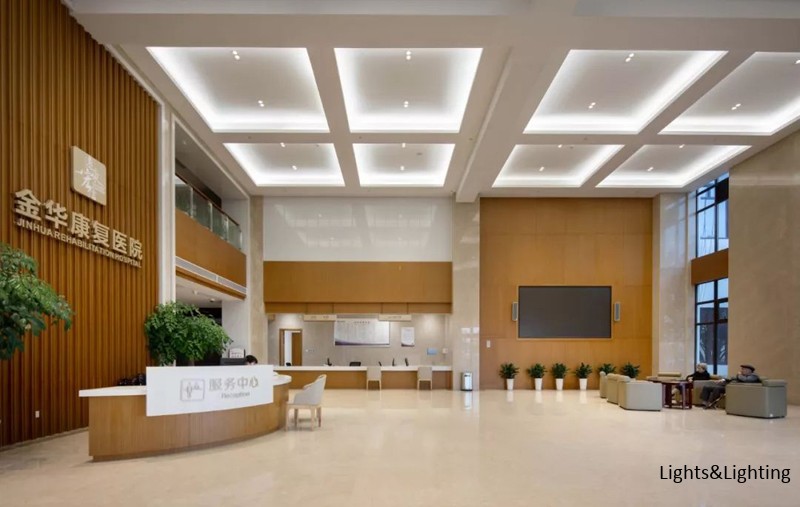
Today's lighting market, from environmental protection, energy-saving products to see, has tended to saturate; but from the health to see, the market is a blue ocean. Nobel laureate Shuji Nakamura delivered a speech at Fudan University, proposing that LED products have blue light hazards, serious and even lead to cancer, and most of the current market have this problem, including government buildings, banks, and even hospitals, schools, families. Therefore, if the health-oriented, the market will be reshuffled and re-launched.
And Opple Lighting is obviously a pioneer in planning to seize the market. As a leading brand in the domestic lighting industry, it has responded to the national medical reform policy by setting up a hospital industry lighting service team, taking "green lighting" as its concept, continuously promoting the development of high-end medical services and meeting multi-level medical needs. Now the team has served the medical industry cases across the country, including Tongji University affiliated Shanghai Tianyou Hospital, Jiangxi Province, the People's Liberation Army Hospital No. 171, Beijing University International Hospital and more than 20. Take Jinhua Rehabilitation Hospital as an example, in analyzing its hospital lighting cases, it is not difficult to find that Opple Lighting has overcome breakthroughs in hospital lighting one after another difficult points under the many experimental blue fields, and got the ticket to enter the hospital lighting ahead of others, setting a benchmark for the industry.
Do the ideal hospital lighting
Hospital lighting is extremely functional, special, clean and precise, lighting design should understand the nature of its work and the requirements of the lighting function, using a variety of measures to meet the requirements of various medical departments and patients. At the same time, hospital buildings include wards, outpatient clinics, medical technology and various medical service facilities, which have different requirements for lighting. Therefore, the hospital lighting design should not only meet the requirements of medical technology, give full play to the functions of the hospital's medical equipment, effective for medical services, but also consider creating a tranquil and harmonious lighting environment for patients, which is beneficial to the treatment and rehabilitation of injured patients. He Kaijun also reminded the modern hospital lighting should highlight the health-centered, taking into account energy saving, to maintain the physical and mental health of patients and medical staff for the purpose of different age groups, different health states of the population, in different hours, different spaces and different operating conditions, to create an intelligent light system suitable for the physical and mental rhythm of the human body.
The Jinhua Rehabilitation Hospital, which Opple Lighting is responsible for the lighting design, is a rehabilitation medical institution adjacent to the 4A-level scenic area of Shuanglong Cave, covering an area of 150 mu, and is built according to the standard of a tertiary rehabilitation hospital. The main building fully integrates the beauty of local gardens and medical functions. A building with white walls and black tiles in the Huizhou style is hidden in the bamboo forest. The first phase has more than 270 rehabilitation beds and the second phase has more than 500 beds, aiming to build a rehabilitation medical institution integrating medical treatment, rehabilitation, nursing care, teaching, scientific research and health management through specialized rehabilitation medical treatment, chronic disease management and health management services to meet the recreation needs of local people.
So what kind of ideal light environment is needed for rehabilitation, nursing, short-term residential care, home care and other services in a rehabilitation hospital? In order to achieve the ideal hospital lighting conditions, Opple Lighting designed the lighting program around Jinhua Rehabilitation Hospital mainly around the visual, psychological and physiological aspects to create a healthy light environment. Medical and nursing staff work long hours with high intensity, physical and mental fatigue and reduced efficiency; patients' tension, fear, anxiety and negative resistance in the process of medical treatment and cure; how to maintain the efficient working state of medical and nursing staff, alleviate patients' negative emotions, reduce hospital operation costs and improve the safety and reliability of lighting equipment have become the core of the design program.
Multi-scene matching, sub-regional layout
According to Lin Ying, the designer in charge of the lighting design of Jinhua Rehabilitation Hospital, the lighting of this project fully takes into account the echo of the architectural style, combining the characteristics of the specific age group of patients, the flow of people, interior decoration style and other characteristics, different from the traditional high brightness, high color temperature environment, here the emphasis on the balance of illumination between the spaces, transition. The color temperature of different functional spaces is selected from 3,000K-5,000K, and different color temperatures are used together to ensure a safe and healthy light environment in functional areas. Public space in the case of ensuring the basic needs, pay attention to the atmosphere, so that patients in which enjoy a professional, healthy and safe light environment, staff enjoy comfortable, efficient and accurate work lighting. Different scenes are used in conjunction with each other, also to ensure safety and better energy saving.
Among them, the design scheme focuses on the lighting layout of seven major areas: outpatient hall, treatment room, ward, nurses' station, corridor, elevator hall and pharmacy.
Outpatient hall: the pivotal area of the hospital, is the place where people come and go intensively, connecting other areas such as consultation rooms, corridors and staircases. Therefore, the lighting requirements bright, comfortable with the outdoor over, highlighting the reception desk, registration fees, information display, waiting area and other key areas. The main use of color temperature of 4,000K hard light bar, ceiling lights and line lights.
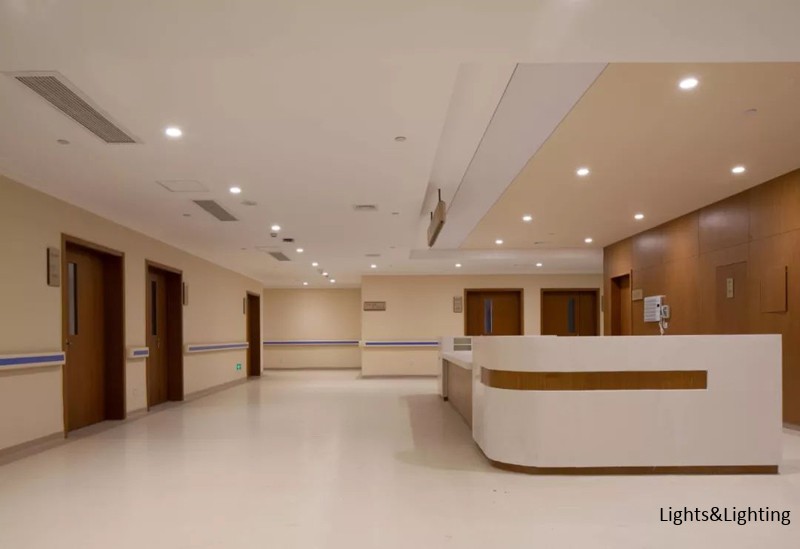
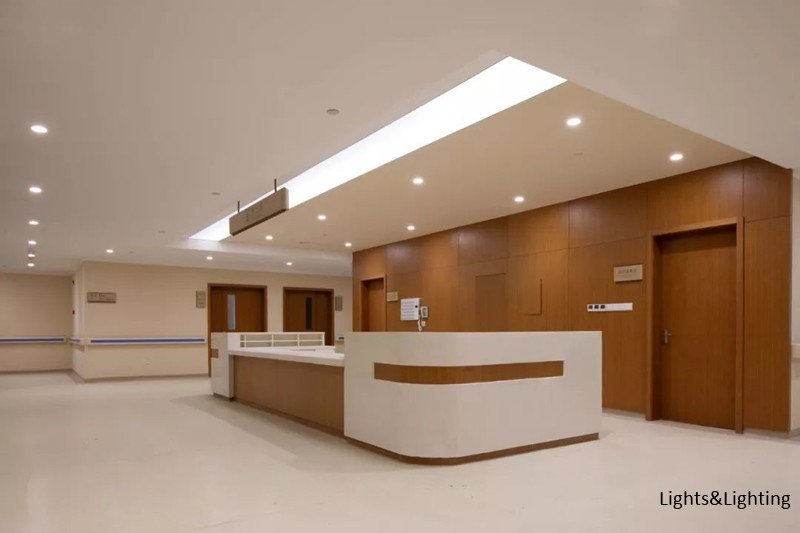
Consultation room: a place where doctors communicate directly with patients, make preliminary examinations and diagnoses, and complete consultation records, with relatively private space. Lighting needs to meet the doctor's needs for consultation, examination and communication, help the doctor make accurate judgment and maintain the concentration of work, and also meet the requirements of relieving patients' tension and anxiety and facilitating relaxation. The treatment room adopts high color rendering lamps to facilitate doctors' accurate judgment in consultation and examination, and the examination area and table area meet the basic illumination requirements for communication, examination and recording; the color temperature is above 4,000K to enhance work efficiency; low surface brightness lamps improve visual comfort and relieve visual fatigue.
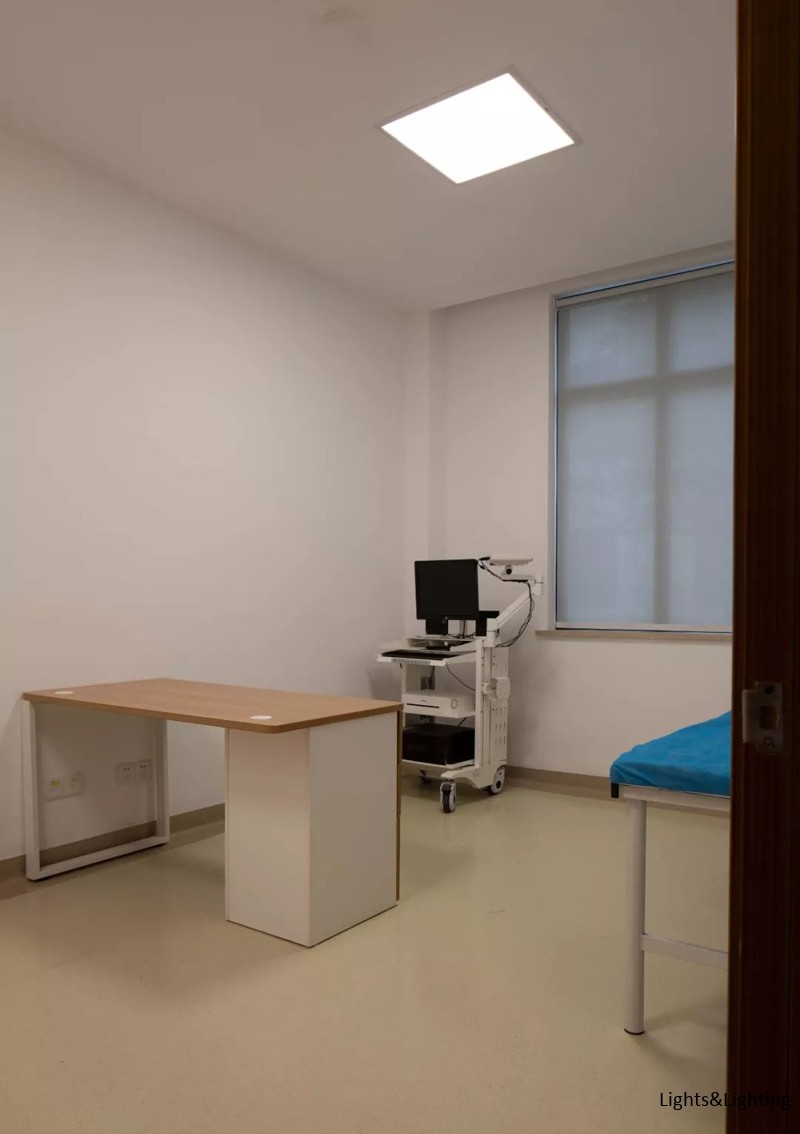
Ward: The main place where patients are treated and live during their stay in the hospital, with a long stay and relatively closed space. As the inpatients change from healthy people to patients, their psychology changes and they easily feel lonely and anxious, so the patient population has large mood swings, sensitivity and strong dependence. Light affects the rhythm of the human body, and the ward lighting is set with reference to natural light, using 3,500 lumens of side-illuminated light panels and wall lamps.
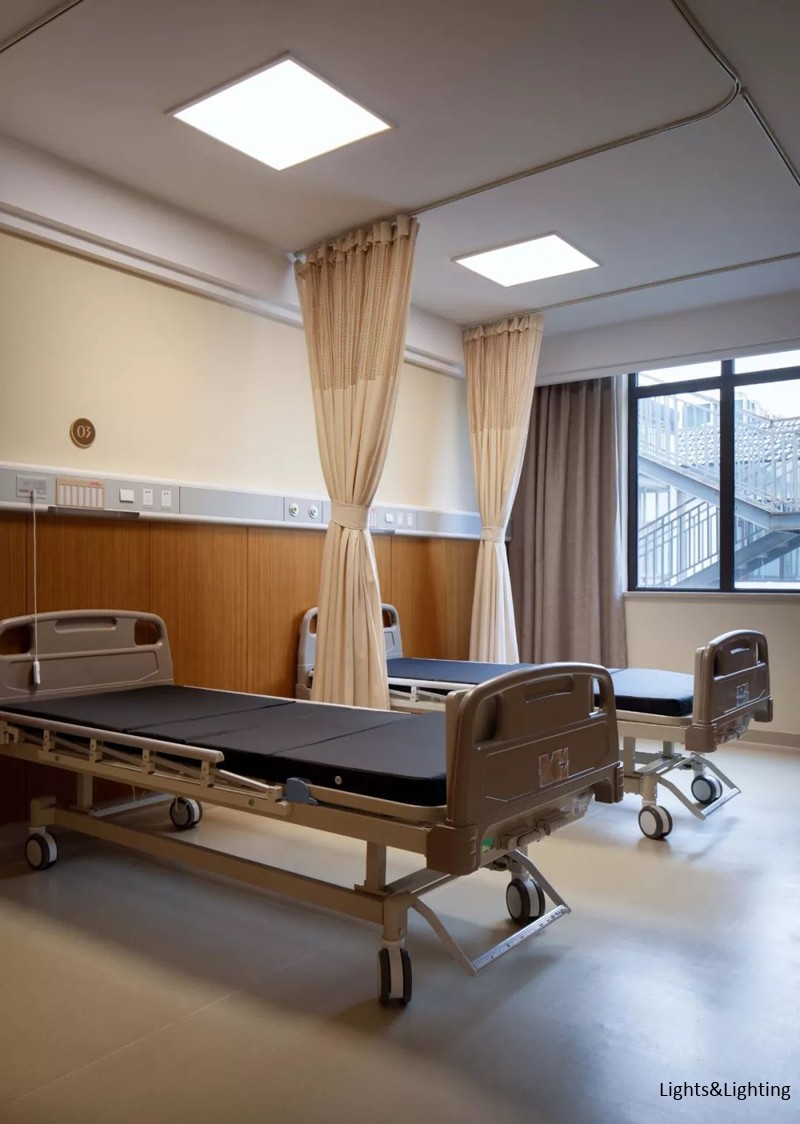
Tips: For the lighting design of wards, Lin Ying especially pointed out that patients in wards are lying down for a long time, so the anti-glare of lamps in wards is especially important, while the lights should meet the working light environment of doctors' examination, rounds and simple disposal; and also meet the light environment of patients' rest and daily activities. The selection and arrangement of the luminaire should meet these functions, so higher requirements are put forward for the luminaire. Opple lighting team combined with existing products, developed and used better anti-glare prismatic panel light panel, and formulated specific luminous flux and other related parameters to meet the needs of various functions.
Nurse station: It mainly adopts semi-open design with strong line of sight accessibility and requires full and bright space. Nurse station requires personnel on duty 24 hours a day, undertaking consultation and procedures, organizing cases, dispensing drugs and simple medical treatment: such as drawing blood, taking blood pressure, taking temperature and other functions, so the lighting must meet the needs of complex reading and writing functions; meet the illumination and color rendering required for drug sorting and intravenous injection; meet a certain amount of façade illumination to facilitate communication; meet the long working hours, high intensity and multiple contents of the nurse station The light environment is comfortable and conducive to the improvement of the medical care. The comfortable light environment is conducive to improving the concentration of medical staff; the use of 4,000K color temperature to meet the requirements of long working hours at the nurses' station, relieving the fatigue of medical staff and enhancing work efficiency; good color rendering can correctly reflect the patient's skin color and other characteristics, thus providing a correct reference basis for treatment, while high color rendering also meets the needs of drug sorting and blood drawing. For LED, in addition to CRI, there are R9 and R15 lamp color rendering index evaluation system, which helps to improve the speed of diagnosis of diseases such as heart, lung, jaundice and thrombosis, and provides good visual identification for medical work such as intravenous injection and allergen detection.
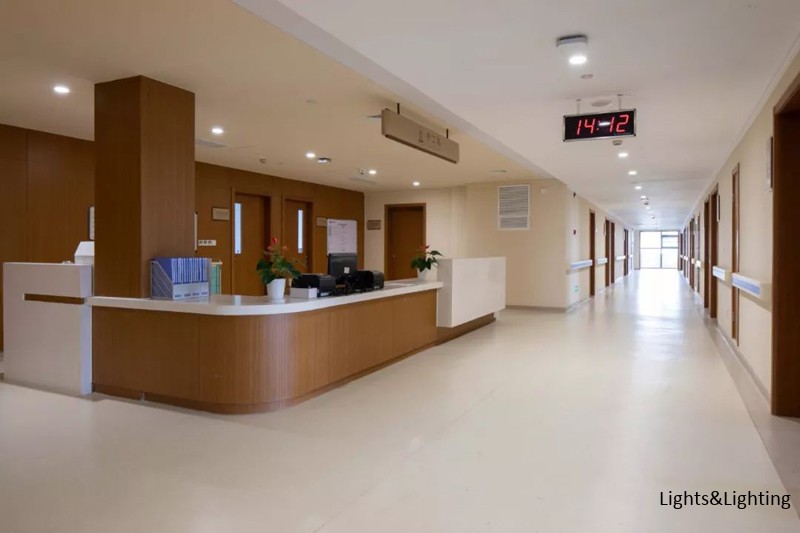
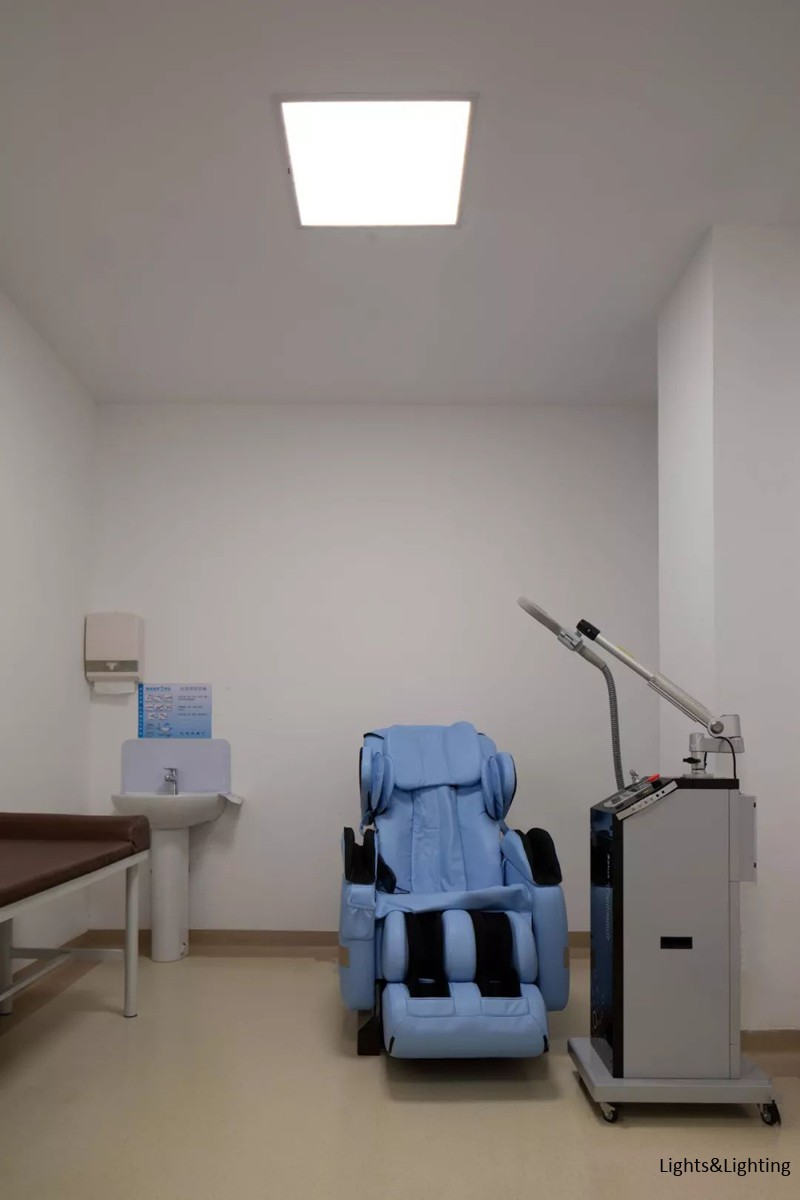
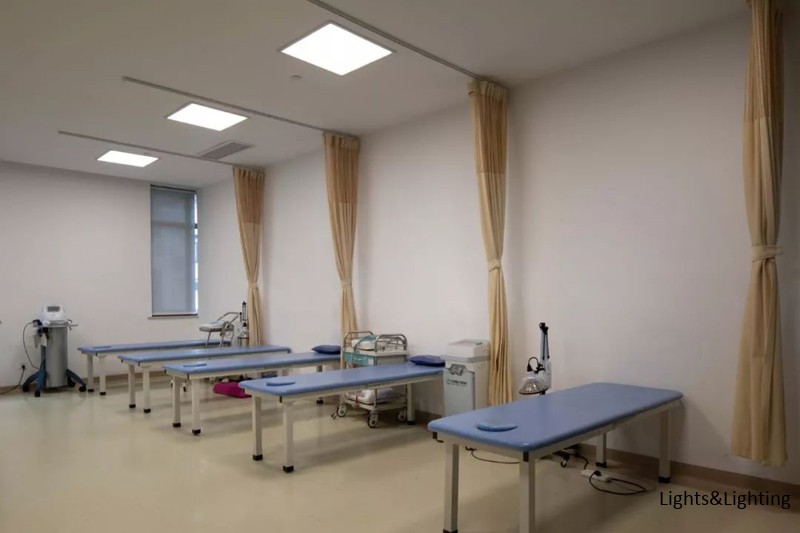
Corridors and elevator lobbies: uniform 5,700K, 3,500lm side-illuminated light panels. In addition there is a uniform illumination of 400lx or more for the overall space of the pharmacy. The display shelves are small in size and densely displayed, so the display shelf façade is bright and uniform with an illumination of 500lx or more.
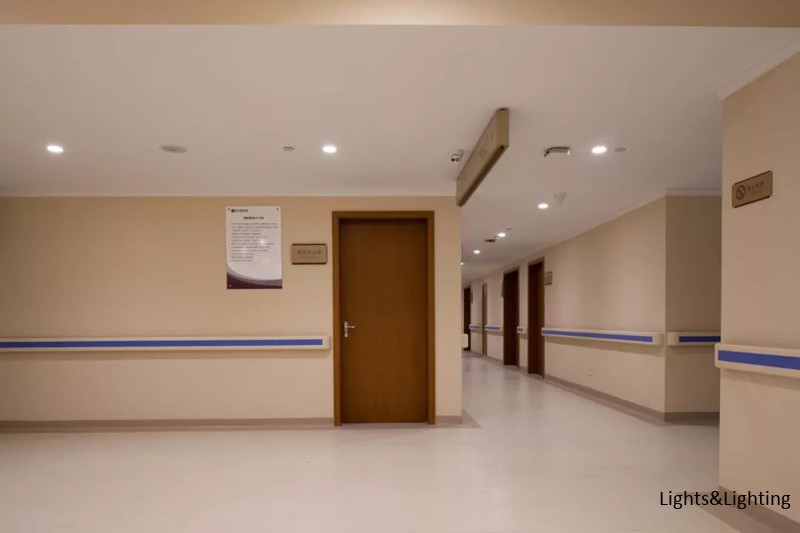
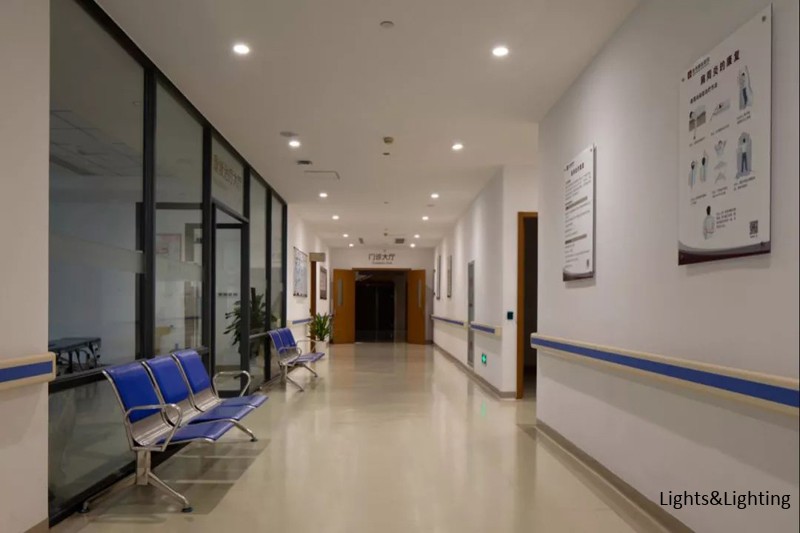
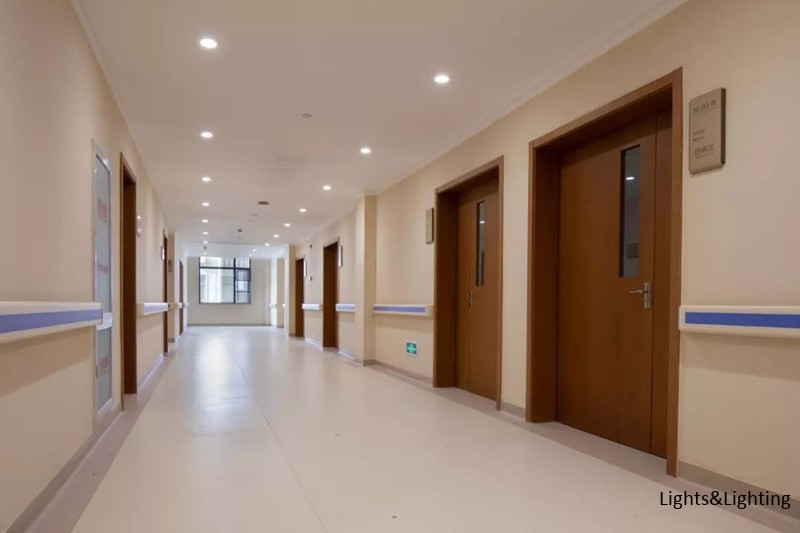
Extension: healthy lighting first, to meet the physiological needs, such as circadian rhythms; but also to meet the requirements of alertness, because alertness represents the efficiency of work, learning efficiency. Second, psychological regulation of emotions. The third is to discard the spectrum that causes eye pathology. The above three requirements are currently the most basic definition of the universal.
The whole process followed down, Lin Ying also gained a lot, she concluded that medical lighting needs to meet the characteristics of four aspects:
first, professional, because patients come to the hospital need to get professional advice, treatment;
second is health, modern people pay more and more attention to the concept of health, from the importance of their own body condition, to the health index of the surrounding environment are more important; third is convenient, in the hospital time is life, so convenient The light environment helps to improve the efficiency of doctors and reduce the anxiety and helplessness of patients unfamiliar with the hospital environment;
finally, safety, a safe light environment is the basic guarantee of life. The medical light environment is being paid more and more attention, now more from the patient's point of view, but medical workers also need to be paid attention to, they will be longer into the hospital environment, so the impact on their work efficiency, the impact of body rhythm, the impact of mood also need to pay attention to.
For Jinhua Rehabilitation Hospital lighting design in the biggest highlight, Lin Ying believes that the nature of the hospital itself determines that it has a certain difference with the light environment of conventional general hospitals, the traditional hospital in the mass flow of people, the need to meet the needs of more age groups of patients, medical workers light environment, focusing on functionality, convenience, accessibility. In Jinhua Rehabilitation Hospital, for rehabilitation, nursing care, short-term residential care, home care and other services, a relaxing and healing light environment can make people slowly unload the complexity and heaviness in their hearts, walk lightly in a more humane light environment, and immerse themselves in a relaxed and professional medical atmosphere. With the grasp of every detail and the humanized experience all the time, this masterpiece is obviously another major breakthrough of Opple Lighting's design and R&D team in the field of hospital lighting.
The future of hospital lighting
As an advanced case in the field of hospital lighting, Jinhua Rehabilitation Hospital has made a good model for the market. But as the scientific research of lighting continues to deepen, the relationship between light and health will also be increasingly discovered by scientists, for example: the non-visual effects of light on the human eye, light perceived through the ganglion cells of the retina can affect the release of melatonin at night, sleep and biological rhythms, lighting is expanded to the field of non-visual biological effects; daylighting systems use natural light, after the system diffuse processing of light brightness, so that it is uniform, soft, and does not produce glare, injecting natural life into the hospital space, effectively saving energy consumption during the daytime lighting, and reducing the operation and maintenance costs of the lighting system, all of which could change instantly at any time in the future.
Liu Hui, director of the Institute of Optics of the Chinese Academy of Metrology, mentioned in this regard that China's market is now large, and active research on foreign light health industries and related products will help us better understand the future international situation. For example, some foreign companies are doing dynamic lighting technology, simulating sunlight. The domestic lighting industry should also be based on the actual situation, combined with the characteristics of enterprises and local application needs to develop a development route, slowly cultivate the market, market segmentation, do professional lighting, not eyebrows and beards.
Contact to hospital lighting, as Hsiao Hong-ching said, the past hospital to medical treatment as the first priority, lighting engineering is not paid attention to, lighting is only to provide basic brightness; fluorescent lamp era, hospital lighting in addition to illumination shortage, the national high color temperature, low apparent finger, strobe and glare is almost a common problem in the country's hospitals, the 1990s electronic ballast to solve the problem of energy saving and strobe, almost all the world will be energy saving Put in the first place, LED light source after the market, only in one fell swoop to solve the technical obstacles ahead; but hospital management by the self-financing policy, reduce unnecessary spending and waste, economic priority management policy guidance, lighting is often not paid attention to, even today in the mainland's first-tier cities in the medical center, high color temperature, low light sources abound, no warm feelings of the hospital, not first-class medical Quality, and now and in the future hospital lighting planning and design should be toward the development of high-quality lighting direction.
"The evaluation of lighting quality should be evaluated from the original single visual effect, gradually over to the dual evaluation of visual and non-visual effects, especially the latter is closely related to human health. Its impact on human physiological rhythms and biological effects has led people to re-examine and rethink the definition of lighting quality." -- Yandan Lin, Professor, Department of Light Source and Lighting Engineering, Fudan University
The impact of lighting quality on the market will obviously be more prescriptive in the present time when scientific knowledge is extremely accessible. And with round after round in innovative technology to occupy the first opportunity of Opple Lighting, naturally, has long been keenly observed the market trend. Its self-developed LED light panels, such as Long Screen, Long Yi and Long Zhong series products, are now widely used in hospital halls, pharmacies, diagnostic rooms, wards and other spaces. With a service life of up to 30,000 hours and a luminous efficacy of up to 80lm/W, the light panels can replace traditional fluorescent light panels on a one-to-one basis, saving energy by up to 40% or more and improving lighting comfort while reducing energy loss and carbon emissions. In particular, the light panel Long Screen is a breakthrough in the traditional design concept of cost-effective LED light panel, its ultra-thin and lightweight integrated design brings super high system efficiency, integrated light panel, a variety of installation methods, can meet 90% of the ceiling needs. Known as "a soft light in the hustle and bustle of the city", the LED downlight HaoZhou is used in hospital aisles and other spaces, with a glare index of UGR<19, creating a comfortable lighting environment and calming the families of patients waiting anxiously in the aisles, and is a preferred product for intimate hospital lighting fixtures.
So what kind of light health in the future? It's still full of imagination. Professor Liu Muqing of Fudan University gave us a definition of light health: light health has two meanings, the first is to make people feel light health through the human eye channel; the second is how light can make people's lives healthier, such as regulating emotions and light therapy. If light health goes beyond the concept of visual lighting, we will have unlimited space to play, and the answer may lie in our "light of life". As He Kaijun said: hospital health lighting is a huge complex system project that is beneficial to the health of various segments of the population, Opple Lighting has made a useful attempt to lighting people have a long way to go, the future is immense, merit!
